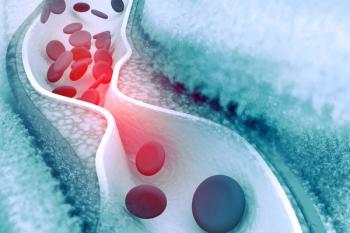
Finerenone Safety, Efficacy for HFmrEF, HFpEF Evaluated by Sex
Study results are especially important for women, who are more likely to experience heart failure with mildly reduced or preserved ejection fraction.
Finerenone therapy for heart failure with mildly reduced or preserved ejection fraction is associated with similar efficacy and safety outcomes in both women and men, according to research results published in JAMA Cardiology.1
Because there are sex-related differences have been reported in the epidemiology, presentation, and
Using data from the phase 3, randomized FINEARTS-HF clinical trial (NCT04435626), investigators conducted prespecified analyses to determine estimated safety and efficacy of finerenone vs placebo in women and men. The primary outcome was composite of total heart failure events (both first and recurrent), including hospitalizations or urgent heart failure events, and cardiovascular death. Secondary outcomes included total heart failure events, change in Kansas City Cardiomyopathy Questionnaire total symptom score (KCCQ-TSS) from baseline to 6, 9, and 12 months, improvement in New York Heart Association (NYHA) functional class from baseline to 12 months, time to first occurrence of a composite renal endpoint, and time to all-cause death.
FINEARTS-HF participants included adults aged 40 years or older with symptomatic heart failure and left ventricular ejection fraction (LLVEF) of 40% or greater. The study cohort included 6001 patients from 653 sites in 37 countries. The majority of participants were men (54.5%); women were generally older (73.6±9.1 years), had a lower estimated glomerular filtration rate (eGFR; 59.7±19.1 mL/min/1.732), and higher rates of BMI class II-II obesity (24%). Median N-terminal pro-B-type natriuretic peptide levels were similar across sex, and mean LVEF was 54.6% vs 50.9% in women and men, respectively. Women also had a worse distribution of NYHA functional class (35% NYHA class III/IV) and “much worse” self-reported health status per the KCCQ-TSS.
Compared with men, women experienced slightly lower event rates, including the incidence rate for the primary outcome (15.7; 95% CI, 14.3-17.3 vs 16.8; 95% CI, 15.4-18.3) per 100 person-years. Between both sexes, the difference increased after adjustment for baseline variables associated with disease prognosis. And although women had worse baseline KCCQ-TSS scores than men—and lower baseline KCCQ-TSS score was associated with primary outcome incidence—women experienced a lower incidence rate of the primary outcome compared with men across the range of the KCCQ-TSS.
No evidence was found indicating that sex modified the effect of finerenone vs placebo on the primary endpoint (RR, 0.78 and 0.88 in women and men, respectively); adjusting for variables did not change this result. Risk reduction of the primary composite endpoint was noted across the range of LVEF in both sexes, and consistent benefits were observed for all components of the primary outcome, including total heart failure events (RR, 0.76 and 0.86), and cardiovascular death (HR, 0.87 and 0.96). Similar patterns were seen for
Neither sex nor treatment with either finerenone or placebo impacted improvement in NYHA functional class from baseline to 12 months, while mean improvement in KCCQ-TSS during the same period was greater in the finerenone group vs placebo, regardless of sex.
In terms of safety, hypokalemia was more common, while elevated creatinine was less common, in women vs men when comparing placebo groups; finerenone increased hyperkalemia and hypotension incidents, and reduced the risk of hypokalemia, vs placebo, with similar differences in women and men.
Study limitations include potentially limited generalizability to all patients with heart failure with preserved or moderately reduced ejection fraction, due to the specific inclusion and exclusion criteria of the FINEARTS-HF clinical trial.
“Finerenone reduced the risk of the primary composite outcome of total (first and recurrent) [heart failure] events and cardiovascular death, while also improving symptoms, in both women and men,” the researchers concluded. “Heart failure with mildly reduced or preserved ejection fraction is relatively more common in women, and results of this study suggest that the consistent efficacy and safety of finerenone is especially relevant for them.”
READ MORE:
Reference
1. Chimura M, Wang X, Jhund PS, et al. Finerenone in women and men with heart failure with mildly reduced or preserved ejection fraction. A secondary analysis of the FINEARTS-HF randomized clinical trial. JAMA Cardiol. Published online November 17, 2024. doi:10.1001/jamacardio.2024.4613
Newsletter
Pharmacy practice is always changing. Stay ahead of the curve with the Drug Topics newsletter and get the latest drug information, industry trends, and patient care tips.















































































































































